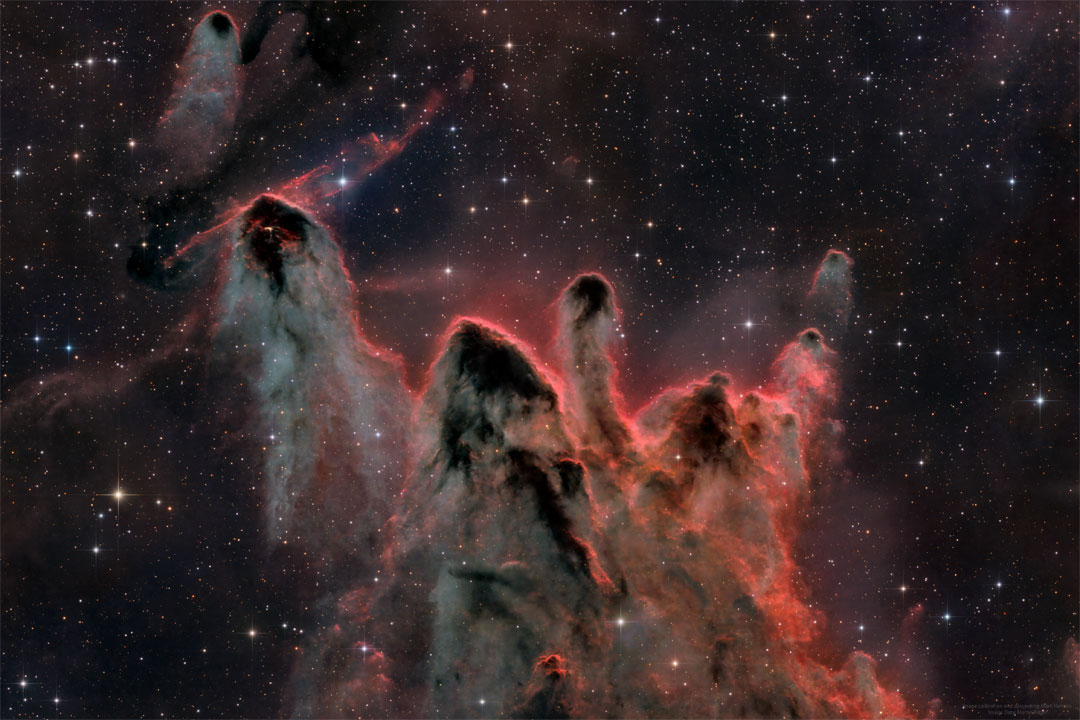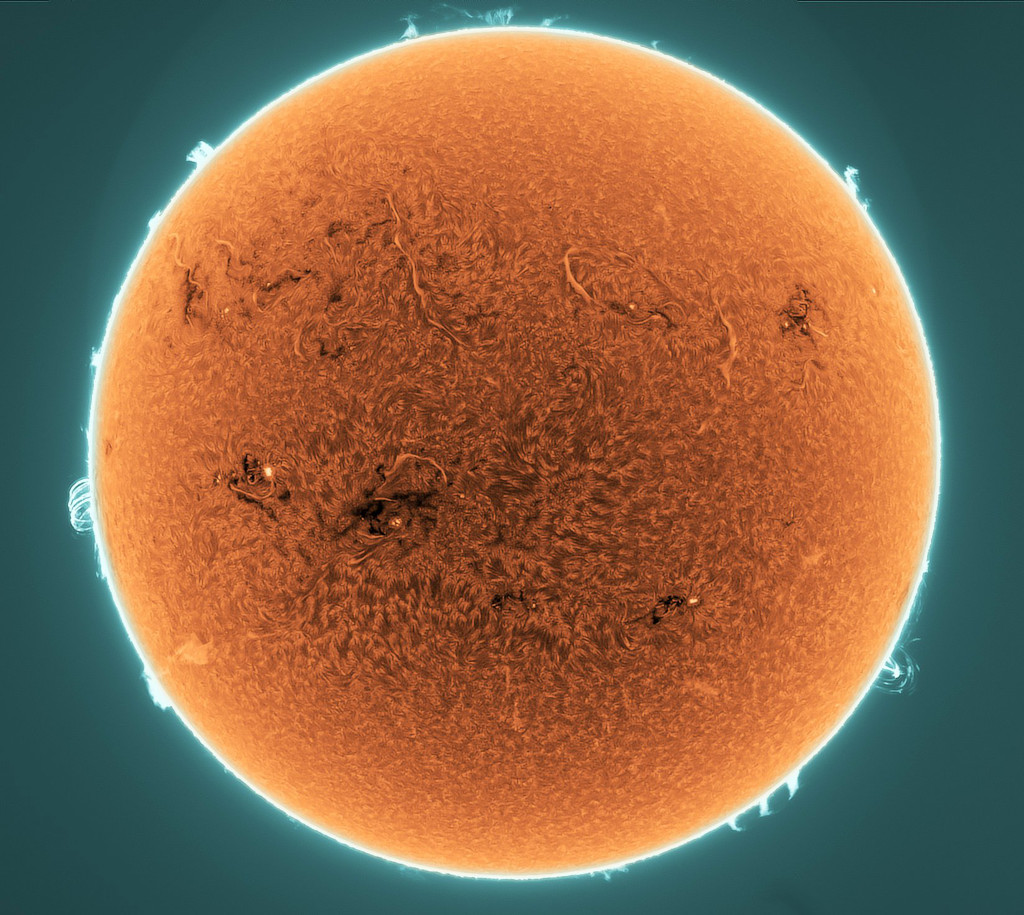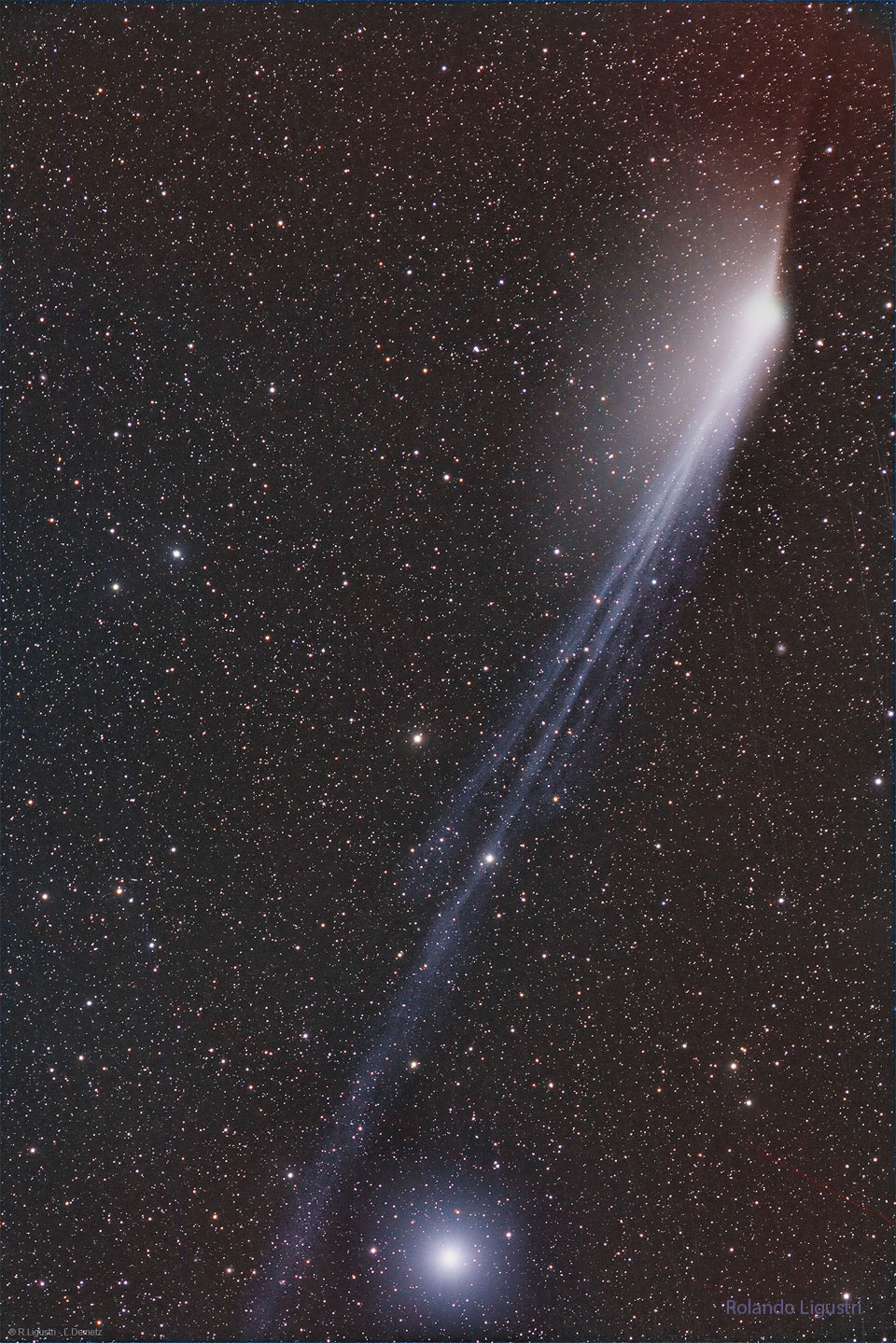

|
Target: Galaxy NGC 3079 Mission: Instrument: Image Credit: NASA/Space Telescope Science Institute |


|
Target: Galaxy NGC 3079 Mission: Instrument: Image Credit: NASA/Space Telescope Science Institute |


From left to right, NASA astronaut candidates Anil Menon, Deniz Burnham, and Marcos Berrios pose for a photograph in front of NASA’s Artemis I Space Launch System and Orion spacecraft at Launch Complex 39B at the agency’s Kennedy Space Center in Florida on Sept. 2, 2022.
Read More

The barred spiral galaxy NGC 6872 is interacting with a smaller galaxy to the upper left. The smaller galaxy has likely stripped gas from NGC 6872 to feed the supermassive black hole in its center.
Read More



Astronaut Buzz Aldrin, lunar module pilot, poses for a photo beside the U.S. flag that has been placed on the Moon at Tranquility Base during the Apollo 11 mission landing on July 20, 1969.
Read More
What are these unusual interstellar structures?
Bright-rimmed, flowing shapes gather near the center of
this rich starfield toward the borders of the nautical southern
constellations
Pupis and Vela


Painting of the NASA logo, also called the meatball, continued on the 525-foot-tall Vehicle Assembly Building at the agency’s Kennedy Space Center in Florida on May 29, 2020.
Read More

The distorted spiral galaxy at center, the Penguin, and the compact elliptical at left, the Egg, are locked in an active embrace. This near- and mid-infrared image combines data from NASA’s James Webb Space Telescope’s NIRCam (Near-Infrared Camera) and MIRI (Mid-Infrared Instrument), and marks the telescope’s second year of science. Webb’s view shows that their interaction is marked by a glow of scattered stars represented in blue. Known jointly as Arp 142, the galaxies made their first pass by one another between 25 and 75 million years ago, causing “fireworks,” or new star formation, in the Penguin. The galaxies are approximately the same mass, which is why one hasn’t consumed the other.
Read More

|
Target: Globular cluster M4 Mission: Instrument: Image Credit: NASA and H. Richer (University of British Columbia), credit for ground-based photo: NOAO/AURA/NSF |

Globular star cluster
Omega Centauri
packs about 10 million
stars much older than the Sun into a volume some 150 light-years in
diameter


The Artemis II Core Stage moves from final assembly to the VAB at NASA’s Michoud Assembly Facility in New Orleans in preparation for delivery to Kennedy Spaceflight Center later this month. Image credit: NASA/Michael DeMocker
Read More

NASA astronaut Matthew Dominick captured this image of Hurricane Beryl in the Caribbean on July 1, 2024, while aboard the International Space Station, and posted it to X. The Category 4 hurricane had winds of about 130 mph (215 kph).
Read More
Found among the rich starfields of the Milky Way,
star
cluster NGC 7789 lies about 8,000 light-years away
toward the constellation Cassiopeia



Technicians used a 30-ton crane to lift NASA’s Orion spacecraft on Friday, June 28, 2024, from the Final Assembly and System Testing cell to the altitude chamber inside the Neil A. Armstrong Operations and Checkout building at NASA’s Kennedy Space Center in Florida. The spacecraft, which will be used for the Artemis II mission to orbit the Moon, underwent leak checks and end-to-end performance verification of the vehicle’s subsystems.
Read More
What’s happened since the universe started?
The time spiral shown here features a few
notable highlights


This labyrinth – with a silhouette of the fictional detective Sherlock Holmes at its center – is used as a calibration target for the cameras and laser that are part of SHERLOC (Scanning Habitable Environments with Raman & Luminescence for Organics and Chemicals), one of the instruments aboard NASA’s Perseverance Mars rover. The image was captured by the Autofocus and Context Imager on SHERLOC on May 11, 2024, the 1,147th day, or sol, of the mission, as the rover team sought to confirm it had successfully addressed an issue with a stuck lens cover.
Read More

|
Target: Galaxy NGC 1512 Mission: Instrument: , Faint Object Camera , Near Infrared Camera , Multi-Object Spectrometer Image Credit: NASA/Space Telescope Science Institute |


Named RCW 7, the nebula is located just over 5300 light-years from Earth in the constellation Puppis. Nebulae are areas of space that are rich in the raw material needed to form new stars. Under the influence of gravity, parts of these molecular clouds collapse until they coalesce into protostars, surrounded by spinning discs of leftover gas and dust. In the case of RCW 7, the protostars forming here are particularly massive, giving off strongly ionising radiation and fierce stellar winds that have transformed it into what is known as a H II region. The ultraviolet radiation from the massive protostars excites the hydrogen, causing it to emit light and giving this nebula its soft pinkish glow. Here Hubble is studying a particular massive protostellar binary named IRAS 07299-1651, still in its glowing cocoon of gas in the curling clouds towards the top of the nebula. To expose this star and its siblings, this image was captured using the Wide Field Camera 3 in near-infrared light. The massive protostars here are brightest in ultraviolet light, but they emit plenty of infrared light which can pass through much of the gas and dust around them and be seen by Hubble.
Read More


Crews transport NOAA’s (National Oceanic and Atmospheric Administration) Geostationary Operational Environmental Satellite (GOES-U) from the Astrotech Space Operations facility to the SpaceX hangar at Launch Complex 39A at NASA’s Kennedy Space Center in Florida beginning on Friday, June 14, 2024, with the operation finishing early Saturday, June 15, 2024. The fourth and final weather-observing and environmental monitoring satellite in NOAA’s GOES-R Series will assist meteorologists in providing advanced weather forecasting and warning capabilities. The two-hour window for liftoff opens 5:16 p.m. EDT Tuesday, June 25, aboard a SpaceX Falcon Heavy rocket from Launch Complex 39A at NASA’s Kennedy Space Center in Florida.
Read More

|
Target: Horsehead Nebula Mission: Instrument: Image Credit: JPL/NASA, NOAO, ESA and The Hubble Heritage Team, (STScI/AURA) |


“HuskyWorks,” a team from Michigan Technological University’s Planetary Surface Technology Development Lab, tests the excavation tools of a robot on a concrete slab, held by a gravity-offloading crane on June 12 at NASA’s Break the Ice Lunar Challenge at Alabama A&M’s Agribition Center in Huntsville, Alabama. Led by Professor Paul van Susante, the team aimed to mimic the conditions of the lunar South Pole, winning an invitation to use the thermal vacuum chambers at NASA’s Marshall Space Flight Center to continue robotic testing.
Read More
Last April’s Full Moon shines
through high clouds
near the horizon,
casting shadows in this garden-at-night skyscape


“I feel that my larger purpose at NASA, which I’ve felt since I came on as an intern, is to leave NASA a better place than I found it.” — Mallory Carbon, Management and Program Analyst, NASA Headquarters
Read More
This colorized and sharpened image of the Sun is composed of
frames recording emission from hydrogen atoms in the solar chromosphere
on May 15


This NASA/ESA Hubble Space Telescope image features the globular cluster NGC 2005. It’s not an unusual globular cluster in and of itself, but it is a peculiarity when compared to its surroundings. NGC 2005 is located about 750 light-years from the heart of the Large Magellanic Cloud (LMC), which is the Milky Way’s largest satellite galaxy some 162,000 light-years from Earth.
Read More

|
Target: Protostellar Disk L1157 Instrument: Owens Valley Millimeter Array Image Credit: NASA/JPL-Caltech |

Is the Lion Nebula the real ruler of the
constellation Cepheus?
This powerful feline appearing
nebula is powered by two
massive stars, each with a mass over 20 times greater than
our Sun


|
Target: Altair Mission: Palomar Testbed Interferometer Instrument: Palomar Testbed Interferometer Image Credit: NASA/JPL/Caltech/Steve Golden |



Why does
Comet Pons-Brooks
now have tails pointing in opposite directions?
The most
spectacular tail is the blue-glowing
ion tail that is visible flowing down the image



What happens if you ascend this
stairway to the Milky Way?
Before answering that, let’s understand the beautiful sky you will see
Read More

Dark markings
and bright nebulae in this telescopic southern sky view
are telltale signs of young stars and
active
star
formation


Orbiting 400 kilometers above Quebec, Canada, planet Earth, the
International Space Station
Expedition 59 crew captured
this snapshot of the broad
St


|
Target: Mission: Two Micron All Sky Survey (2MASS) Instrument: Two Micron All Sky Survey (2MASS) Image Credit: M.F. Skrutskie (UMass; Principal Investigator, 2MASS), J.M. Carpenter (Caltech), R. Hurt (IPAC/Caltech) |







Take this simulated plunge
and dive into the upper atmosphere of Jupiter, the
Solar System’s ruling gas giant